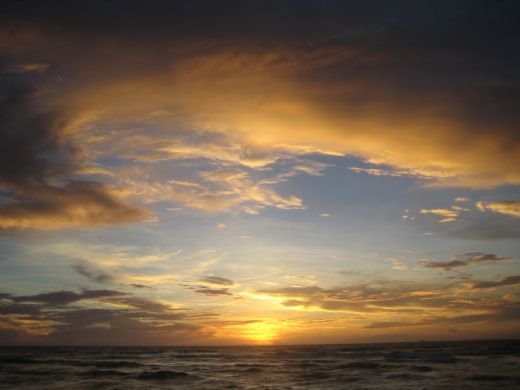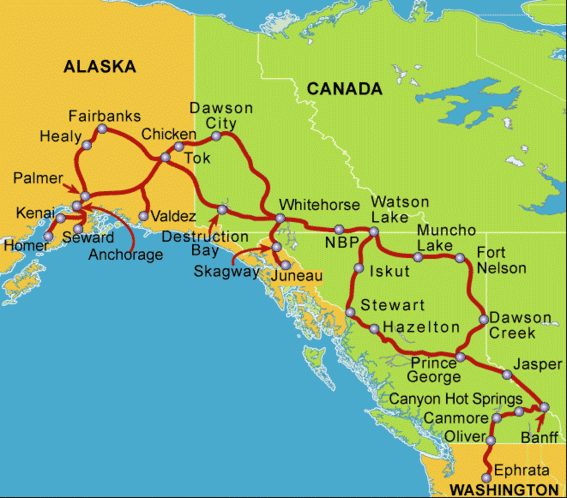Thursday June 7, the caravan pulled out of Ephrata, bound for the Okanagan Valley of British Columbia. We went north on two lane roads through farms and orchards, along rivers and lakes, into the coulee area of eastern Washington. During the last Ice Age, a lake of glacial melt water formed across eastern Washington, the Idaho panhandle and western Montana. The ice dam periodically broke, releasing gigantic floods over the region. The floods were greater than any known during recorded history, depositing silt and gigantic boulders all the way to the coast and beyond, and creating huge subterranean canyons at the mouth of the Columbia River. The gigantic braided lake and river beds that were left behind are called coulees – areas of water-cut mesas and gorges. Grand Coulee Dam spans one of the higher coulees and dams the upper Columbia River for hydroelectric power.
We crossed the Columbia at another hydroelectric dam, the Chief Joseph Dam, then began climbing into fir forest. Everywhere there was running and falling water. The rivers were at spring flood stage and water seemed to pour out of bare rock and over canyon walls everywhere we looked.
We reached the Canadian border at Osoyoos, a smaller border station than the main one near Vancouver. The Canadian customs official was most interested in what we had for weapons. He seemed to think that, as Americans, we must have firearms in the coach and was skeptical as we proclaimed that we had none. Two minutes later, we were in Canada!
Our path into Canada followed the Osoyoos River into the Okanagan Valley. This area is actually the northern limit of the Sonoran Desert – yes, desert in Canada! Although the area only gets about 10-14 inches of rain (and a dusting of snow), irrigation made it a paradise of fruit orchards and truck farms. Water is plentiful in nearby rivers and lakes; it just had to be piped in. In the past 15 years, the area has warmed by several degrees, resulting in milder winters. The warmer climate now permits growing noble varieties of wine grapes. There are over 100 estate wineries in the valley, mostly established within the last 20 years in place of tree fruit orchards.
On Friday afternoon our group toured three wineries, with talks by the vintners about their styles and methods of wine production. The area still gets hard winter freezes (most years) and one of the wineries specializes in the production of ice wines. To make ice wine, a vintner has to take a big risk and leave fruit on the vine until it freezes hard. The frozen berries are hand picked, often at 2 AM, and immediately pressed to separate a concentrated juice from the ice crystals. The wine is a sweet dessert wine with intense fruitiness. Another vintner specializes in wines made from fruit or fruit-grape blends. The third was a marvel of modern technology applied to winemaking. Then, we stopped for local fruit and produce. Strawberries and cherries were just coming into season and were perfectly ripe and sweet.


1 comment:
OK, so your journal is a few days behind. I am wondering if you can "see" Banff and Jasper in a day as your schedule show. Please write about how much you can see, where you stop, etc. We are planning to go there next month.
Post a Comment